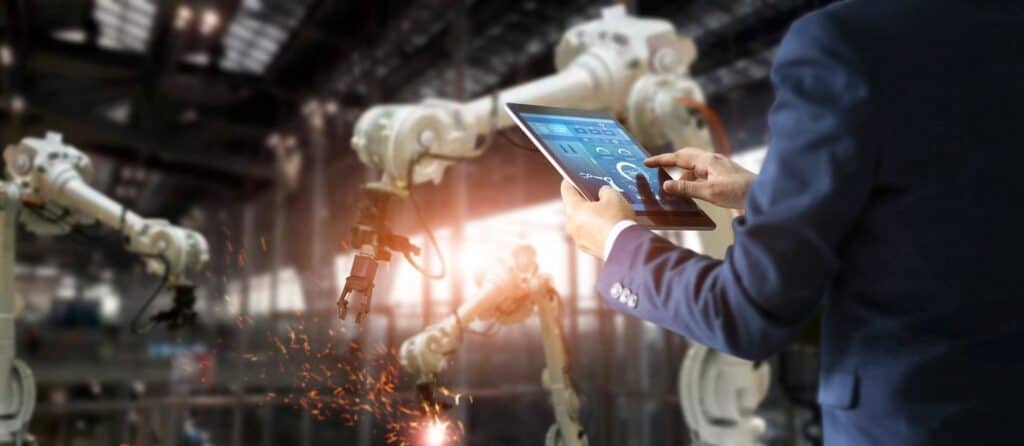In the dynamic realm of warehouse management, the fusion of data analytics and artificial intelligence (AI) stands as a transformative force, reshaping how businesses optimize operations, predict demand, and make critical decisions. In this comprehensive exploration, we delve into the profound impact of integrating data analytics and AI in warehousing, supported by robust data, compelling statistics, and intriguing facts.
Unveiling the Synergy: Data Analytics and Artificial Intelligence
The Core of Data Analytics
Data analytics involves the systematic analysis of raw data to extract meaningful insights, identify patterns, and make informed decisions. In the context of warehousing, it allows businesses to leverage historical and real-time data for strategic planning.
Artificial Intelligence in Warehousing
Artificial intelligence introduces machine learning algorithms and advanced computing to warehouses, enabling systems to learn, adapt, and make autonomous decisions. This revolutionizes processes from inventory management to supply chain optimization.
Key Contributions to Warehouse Performance
1. Predictive Analytics
Predictive analytics utilizes historical data and AI algorithms to forecast future trends, enabling warehouses to anticipate demand patterns and optimize stock levels.
Statistics:
- According to a study by Gartner, companies leveraging predictive analytics experience an average 22% increase in forecast accuracy.
2. Demand Forecasting
AI-driven demand forecasting enhances accuracy by analyzing multiple variables, including market trends, historical sales data, and external factors influencing demand.
Statistics:
- A report by Deloitte states that businesses incorporating AI in demand forecasting reduce forecasting errors by 30% on average.
3. Decision-Making Optimization
AI algorithms aid in decision-making optimization, providing real-time insights that empower warehouse managers to make agile and data-driven decisions.
Statistics:
- Research from the International Data Corporation (IDC) indicates that AI-driven decision-making results in a 40% reduction in decision-making time.
Innovative Technologies Shaping the Landscape
1. Internet of Things (IoT)
The integration of Internet of Things (IoT) devices in warehouses enhances data collection and connectivity. Smart sensors and devices provide real-time data, contributing to more accurate analytics.
Statistics:
- Cisco predicts that the number of IoT devices in use will reach 30.9 billion by 2030, significantly impacting warehouse operations.

2. Robotics and Automation
Robotics and automation powered by AI streamline warehouse processes. Automated guided vehicles (AGVs) and robotic arms contribute to efficient order fulfillment and inventory management.
Statistics:
- A study by McKinsey & Company estimates that automation in warehouses can lead to a 40% reduction in operating costs.
Interesting Facts about Data Analytics and AI in Warehousing
- The term “big data” in warehousing refers to the massive volumes of data generated by various sources, including sensors, RFID tags, and transaction records.
- The first AI-powered warehouse robot, named “Kiva,” was introduced by a company later acquired by Amazon in 2012, revolutionizing their fulfillment centers.
- The adoption of AI in warehousing is not limited to large enterprises. Small and medium-sized businesses are increasingly integrating AI technologies to enhance competitiveness.
Embracing the Future: Implementing Data Analytics and AI in Warehousing
As warehouses navigate the complexities of modern supply chains, the integration of data analytics and AI becomes a strategic imperative. The advantages of predictive analytics, demand forecasting, and optimized decision-making position this synergy as a cornerstone for future warehouse performance.
Strategies for Successful Implementation
1. Data Quality Management
Ensuring the accuracy and completeness of data is crucial for effective analytics and AI applications. Implementing robust data quality management practices is fundamental.
2. Continuous Training and Development
As AI technologies evolve, providing continuous training to warehouse staff ensures they can effectively operate and maximize the benefits of these advanced systems.
Overcoming Challenges: A Roadmap to Efficient Implementation
While the benefits are substantial, integrating data analytics and AI in warehouses poses challenges. Addressing issues such as data privacy, workforce adaptation, and initial investment hurdles is essential for successful implementation.
Conclusion
In conclusion, the era of data analytics and artificial intelligence in warehousing has dawned, promising unparalleled advancements in operational efficiency and decision-making accuracy. As warehouses embrace predictive analytics, demand forecasting, and optimized decision-making, they position themselves at the forefront of a technological revolution.
